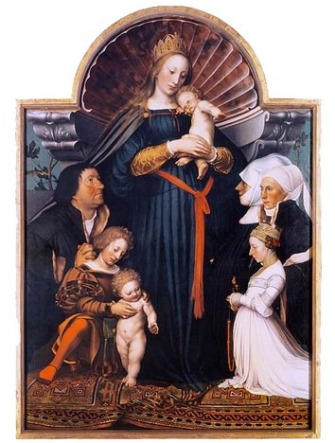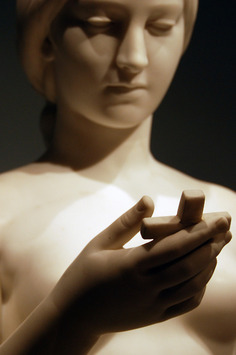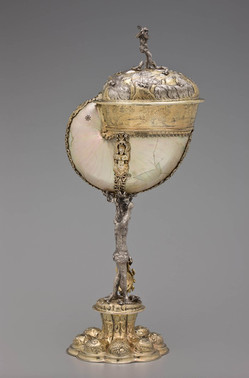Maybe you saw the news last week that a German billionaire named Reinhold Wuerth (below right) has privately purchased Hans Holbein’s “Madonna with Basel Mayer Jakob Meyer and His Family” for at least $70 million. Experts are calling it the most important German Old Master to change hands since World War II. (Here’s a link to the Bloomberg story on it.)
That’s not the only reason this picture, which I saw in Frankfurt in 2005, can lay claim to fame. It’s unquestionably beautiful, celebrated for capturing the softness of Italian Renaissance masters and the unstinting realism of Northern Renaissance masters. And it’s in pristine condition.
 But this painting is also famous for its past, which involves cunning 17th century fakery, duped royalty, and dueling accounts more than two centuries later over which of two renderings was real and which a copy – all leading to a different renown: Holbein’s Madonna was the subject of what experts say was the first art historical conference.
But this painting is also famous for its past, which involves cunning 17th century fakery, duped royalty, and dueling accounts more than two centuries later over which of two renderings was real and which a copy – all leading to a different renown: Holbein’s Madonna was the subject of what experts say was the first art historical conference.
For more than a century after it was completed in 1528, the painting led a quiet life, escaping the religious wars that left many devotional art works in splinters. Then it fell into the hands of an art dealer named Le Blond, of Paris. Recognizing its worth, he secretly commissioned a copy, then sold one work to Marie de Medici, the widowed Queen of France, and the other to an Amsterdam merchant.
Both works found their way to Germany. The Queen’s Madonna passed through at least two hands before being purchased for the Count of Saxony and put on display in Dresden. The merchant’s version was soon sold to an even richer Amsterdam merchant. It disappeared until 1822, when Prince William of Prussia bought it from a Parisian dealer as a present to his wife, Princess Marianne.
Which German royal owned the original?
The mystery raged until 1871, when both works went on view in Munich. Art historians assembled before the two paintings. For about three weeks, they scrutinized and debated. They decided in favor of the one purchased by Prince William, which by that time had passed through inheritance into the hands of Grand Duke Ludwig of Hesse. And they issued what may have been the first art press release.
 The proof was in the timing. Holbein had started the work in 1526, and when he returned to it to finish it two years later, Meyer asked for alterations. His daughter had wed, for example, and now wore the modest hair style of a married woman. “There are lots of changes,” Dr. Bodo Brinkmann, an expert on German and Nederlandish Old Master paintings whom I spoke with in 2005, when he was a curator at the Staedel Museum in Frankfurt, where it has hung (mostly) since 2003.
The proof was in the timing. Holbein had started the work in 1526, and when he returned to it to finish it two years later, Meyer asked for alterations. His daughter had wed, for example, and now wore the modest hair style of a married woman. “There are lots of changes,” Dr. Bodo Brinkmann, an expert on German and Nederlandish Old Master paintings whom I spoke with in 2005, when he was a curator at the Staedel Museum in Frankfurt, where it has hung (mostly) since 2003.
“The hair of the girl was once long; she was older when the painting was finished than when he started. The bonnet on the second wife was changed.”
The copy, he said, “does not show the changes, the pentimenti, that are a feature of time. The copy was made around 1630 and the pentimenti would not yet have shown.”
Much of this story – and more, including some heart-stopping moments regarding the painting’s near-extinction during World War II – is detailed in a booklet on sale at the Schlossmuseum Darmstadt, where the painting hung until 2003 (except for an occasional exhibition loan), when it moved to the Staedel museum in Frankfurt.
The Hesse family made the sale in mid-July to cover estate taxes. Had it not been listed as a German treasure, ineligible for an export license, it could have fetched more than $165 million, experts estimate.
The painting visited the U.S. in 2005, as part of “Hesse: A Princely German Collection,” which I wrote about for The New York Times.

 The latest from Egypt has Prime minister Essam Sharaf reversing course, and cancelling his nomination of Abdel Fatah El-Banna to hold Egypt’s antiquities portfolio.
The latest from Egypt has Prime minister Essam Sharaf reversing course, and cancelling his nomination of Abdel Fatah El-Banna to hold Egypt’s antiquities portfolio. 

